Finding the Perfect Katana Length: A Guide for Every Practitioner
The katana, often regarded as one of the most iconic weapons in history, has a blade length that holds deep significance. Historically, the katana has been crafted in various sizes, with typical blade lengths ranging from 27 to 30 inches (68–76 cm). This range reflects the evolution of the sword, from its early forms designed for mounted combat to the more refined versions used by samurai on foot. But what does this mean for modern practitioners of kenjutsu or kendo? The length of your katana plays a crucial role in how it handles and how comfortable it is to wield. Choosing the right size is not merely a matter of preference; it’s essential to aligning the weapon with your body and fighting style.
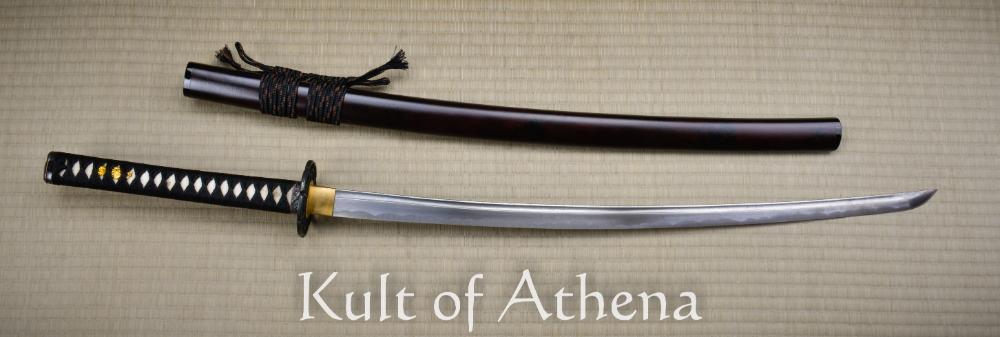
The Right Sword for the Right Practitioner
A katana’s length is far from a one-size-fits-all measurement. While the traditional blade range of 27 to 30 inches works for most people, the sword you choose should always match your unique needs. After all, a katana that feels right in the hands of one practitioner may not be ideal for another. Just as with any tool or weapon, comfort and efficiency are paramount. If your sword is too long or too short, it will disrupt your technique, causing unnecessary strain or reducing your effectiveness during training.
Whether you’re a seasoned practitioner or just starting your journey into the world of Japanese swords, understanding how to select the correct blade length will make a world of difference. A katana that matches your body’s proportions and your training style is key to maximizing your potential.
What You’ll Learn in This Guide
In this post, we’ll help you determine the ideal katana length based on several personal factors—your height, arm length, strength, and preferred training style. By the end, you’ll have a clearer understanding of how to choose a katana that feels like an extension of your body, not a foreign object. So, let’s dive into the factors that make all the difference in finding the sword that suits you best.
The Importance of a Fitted Katana
Effect on Technique & Form
- Too Long: A blade that’s too long can be difficult to control, especially when drawing or executing precise cuts. It may slow down reaction time and hinder precision.
- Too Short: A blade that’s too short limits reach, affects balance, and can lead to improper form, making techniques less effective.
Avoiding Injury
An improperly sized katana can strain joints, leading to overextension or discomfort during practice. A blade that is too long can stress the wrists, while one that is too short can cause awkward posture and inefficient movements, increasing the risk of injury.
Maximizing Efficiency & Enjoyment
An ill-fitting katana can be frustrating to use. If the sword is hard to control or uncomfortable, it can slow progress and diminish training enjoyment. A well-sized katana promotes fluid movements, enhances muscle memory, and keeps you engaged in your practice.
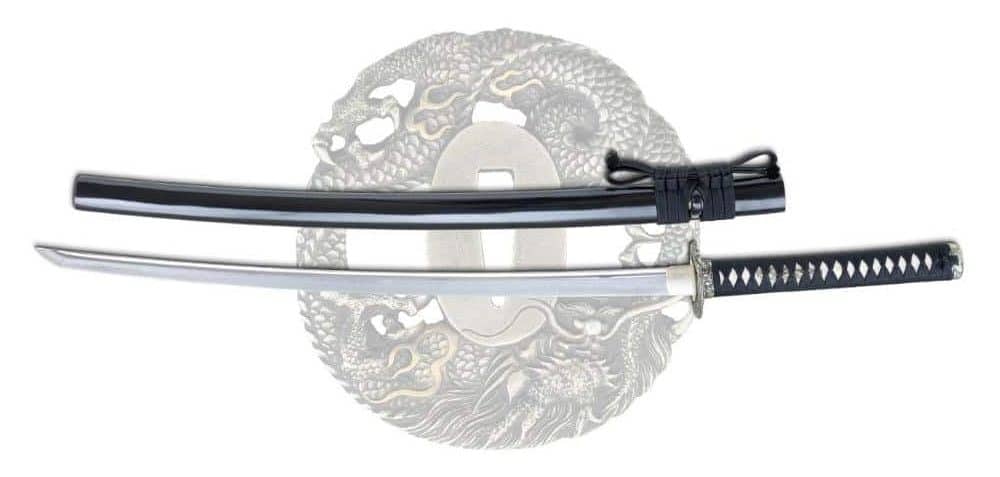
Maximizing Efficiency & Enjoyment
An ill-fitting katana creates frustration and hampers progress. If you’re constantly battling with your sword, your focus shifts away from improving technique. The right katana enhances muscle memory, promotes fluidity, and keeps you engaged in your training journey.
Testing the Draw
One of the best tests for katana length is the draw. If the sword doesn’t glide smoothly out of the scabbard (saya), it might be too long. A smooth, fluid draw is essential for quick, efficient action—if your katana feels stuck or awkward, it’s time to rethink the length.
Factors That Influence the Ideal Katana Length
Strength & Physical Build
Weight Distribution
Longer katanas typically weigh more and can be tip-heavy, especially if your strength isn’t up to the task. A blade that’s too heavy for your build can make control difficult, throwing off your movements and tiring you out quickly.
Endurance & Control
Consider whether you can maintain control and sustain swings throughout your training session. A katana that feels manageable at first might become a strain over time if the weight or balance isn’t right for your strength and endurance.
Arm Length: Finding Your Perfect Fit
Your arm length plays a huge role in choosing the right katana. If you have longer arms, a longer blade will likely feel more natural, giving you the reach needed for fluid, powerful strikes. But if your arms are shorter, a long katana can be unwieldy, causing you to over-extend and lose control. Your katana should feel like an extension of your body, not a burden.
Bo-Hi or No Hi?
A Bohi groove is a feature on many katana and this groove in the spine reduces blade weight without greatly impacting durability. The presence of the groove is to reduce weight and improve the balance and handling of the katana, but it comes at a cost of the blade striking with less force due to its reduced mass. The presence of the groove can greatly impact how manageable or easy to wield a katana is, so whether you wish to have one with or without the groove is a matter of personal preference. If you wish for your katana to be focused on forms and drills, you may prefer the groove. If you wish to focus on sheet cutting power for tatami cutting, you may prefer one without a bohi.
Training Style or Martial Arts School
Iaido vs. Kendo vs. Kenjutsu
Different martial arts schools often recommend slightly different katana lengths based on their specific techniques. Iaido, Kendo, and Kenjutsu all emphasize unique movements, so the blade length may vary to support the style and the practitioner’s needs.
Sensei’s Recommendations
Always consult your instructor for advice on the ideal katana length. An experienced sensei will understand your skill level, body mechanics, and training goals, ensuring the right fit for your practice.
Purpose of the Katana
Display vs. Practical Use
If your katana is primarily for display, the length can be more flexible, with aesthetics taking priority over function. However, if you’re training or sparring seriously, the correct blade length is crucial for safety and technique.Training & Sparring
For active training and sparring, proper length is essential. An ill-fitting sword can lead to injury and disrupt your technique, so it’s vital to choose a blade that complements your movements and enhances your performance.
Step-by-Step Method to Determine Your Ideal Katana Length
1. Take Body Measurements
To find the right katana length, you need to measure your body in a way that reflects your natural stance and proportions. Here’s how to do it:
- Measurement from Wrist to Floor:
- Stand up straight in a relaxed posture.
- Extend one arm out to your side, keeping it parallel to the ground.
- Measure from the tip of your wrist (where your hand meets the wrist joint) to the floor. This measurement gives you an idea of your natural reach and helps determine the blade length that feels most comfortable when drawing or swinging.
These measurements serve as the foundation for determining the best katana length for your body. It’s important that you take these measurements while standing naturally, as they will reflect your most comfortable posture when wielding the sword.
2. Quick Reference Chart
Once you’ve taken your body measurements, refer to the following chart for a guideline on katana blade lengths based on common body measurements and heights:
| Height | Wrist-to-Floor Measurement | Recommended Blade Length |
| 5’0″ – 5’4″ | 28 – 30 inches | 26 – 27 inches |
| 5’4″ – 5’8″ | 30 – 32 inches | 27 – 28 inches |
| 5’8″ – 6’0″ | 32 – 34 inches | 28 – 29 inches |
| 6’0″ + | 34 – 36 inches | 29 – 30 inches |
This chart provides a general range for most practitioners, but remember that individual variations (like arm length or build) may make a slight difference. It’s always a good idea to test a katana or bokken within the recommended range to see which one feels the most natural.
3. Test the Measurements
Once you have an ideal range from the chart, it’s essential to physically test the katana (or bokken) in your training environment.
- Test the Draw: Stand in a natural stance, draw the sword from the scabbard (saya), and see if the sword feels too cumbersome or difficult to handle. If it’s too long, the draw might feel slow or awkward; if it’s too short, you might feel limited in reach.
- Swing the Sword: Execute some practice swings, paying attention to how the sword moves through the air. Does it feel balanced, or does it feel too heavy or too light in your hands? A katana should feel like an extension of your body, not something you have to fight to control.
- Sheathing the Sword: Practice sheathing the sword (nukitsuke) to see if it feels smooth and fluid. If you’re struggling to return the blade to the scabbard, it may indicate that the sword is too long or too short for your body mechanics.
4. Fine-Tune Based on Personal Preference
While the measurements and chart give you a starting point, personal preference plays a crucial role in selecting the ideal katana length. You might find that slightly adjusting the length (within a few inches) based on how the sword feels in motion makes a significant difference in comfort and control.
Differing Lengths of Katana Blades
Longer-Bladed Katana
-
Dragon King – Autumn Leaf Katana – New Version
Quick View$398.00 – $468.00In stock
-
Dragon King – Winter Sun Katana
Quick View$324.99 – $364.99In stock
-
Musha Damascus Dynasty Katana
Quick View$254.99 – $299.99In stock
Average Length Katana
-
Musha Hand Honed Katana with Red Saya
Quick View$64.99 – $89.99In stock
-
Musashi Black Katana
Quick View$159.99In stock
-
Balaur Arms – Shinto Oni Katana
Quick View$298.00 – $378.00In stock
Shorter Katana
-
Musha Hand Honed Katana
Quick View$64.99 – $89.99In stock
-
Musha – Imperial Silver Dragon Katana
Quick View$84.99 – $99.99In stock
-
Musha Oda Clan Katana
Quick View$74.99 – $99.99In stock
Frequently Asked Questions (FAQs)
Yes, most dojos recommend a ~28-inch blade for average-height beginners, but personal measurements are always the best guide.
No. Katana lengths vary, and different styles or dojos may have their own recommendations.
Yes. The tsuka affects balance and grip. Consult your instructor for the best fit.
The Right Katana Length for Your Body and Style
Choosing the right katana length is not a one-size-fits-all decision. It’s deeply personal and depends on several factors such as your height, arm length, strength, and the specific martial arts style you practice. Your body proportions play a huge role in determining how the sword will feel in your hands and how well you can control it. Beyond just comfort, the correct katana length is essential for executing proper technique and ensuring that you’re not hindered by a blade that’s too long or too short.
It’s important to keep in mind that these are guidelines, not hard and fast rules. Everyone has unique body mechanics, so even within general height and arm length ranges, the ideal katana may vary. If possible, try out different lengths before making a decision. Visit your dojo, practice with a bokken or shinai, and see what feels natural. Don’t hesitate to consult an experienced instructor or practitioner—an expert can offer invaluable insights tailored to your skill level and training needs.
Final Tip
Ultimately, the goal is to find a balance between tradition and personal comfort. While the katana has centuries of history behind it, your personal fit is just as important in ensuring that you can perform at your best. The right katana length will maximize your technique, enhance your confidence, and ensure that you stay safe and comfortable throughout your practice. Remember, the sword should feel like an extension of yourself, making your movements fluid and effortless. By following these guidelines and testing different lengths, you can find the perfect katana to support your martial arts journey.



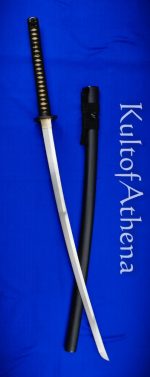
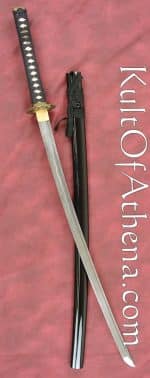
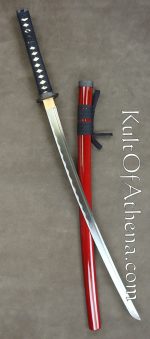
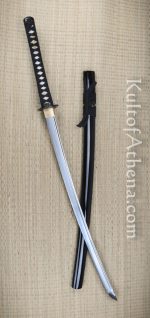

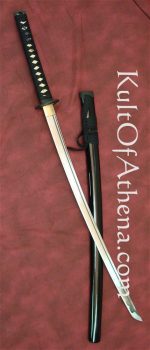

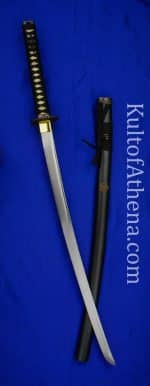
Leave a Reply